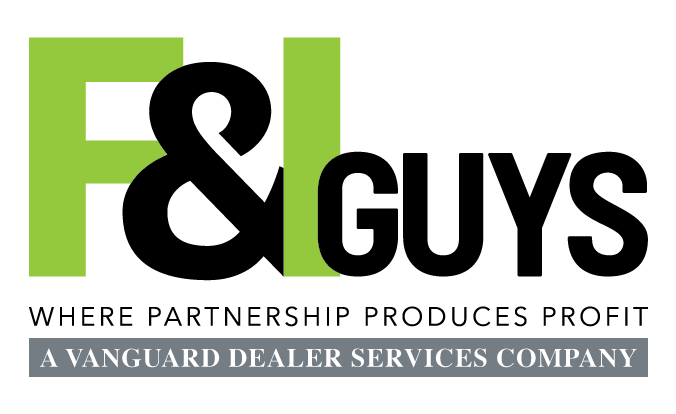1. Not Utilizing Extended Terms to Sell Product
Term is, without a doubt, our biggest weapon in the F&I office. As soon as the desk hands us a deal, the first thing we should be looking for is what extended term options are available through our lenders.
Thousands of dollars in lost profit can result from failure to capitalize on this technique. Extending a loan just three months, from 60 to 63, or from 72 to 75, makes a massive difference. A typical car payment is around $350, which means even three months’ worth of term leaves you $1,000 to sell additional products.
When we introduce term is crucial, as well. All too often, F&I managers resort to bumping term, after the customer has objected. This makes the customer second-guess the idea altogether. The most effective way to use this tool is to offer the longer term on the initial menu, focusing all payment discussions around that figure. Allow the customer to become comfortable with the payment first, and then handle term objection if it comes.
2. Maximizing Profit with Pennies
I can walk into pretty much any 50-car showroom today and find at least $5,000 worth of gross the F&I manager left off the table, without selling one additional product. The average F&I manager today fails to understand the importance of capturing every last cent on a car deal.
For instance, let’s say that, on second pass, the customer agrees to purchase two products for a payment of $286.42. Most F&I managers will roll with that payment simply, because that’s what the math came out to once they threw in a discount.
However, 99% of buyers who would accept a $286.42 payment would also accept a payment of $289.99. The difference between the payment the customer agreed to, and the payment they would have taken anyway, is $3.57.
When you multiply $3.57 by 75 loan payments it leaves $267.75 in additional markup you could hold on your products. Repeat that process on just 25 deals and you add $6,693.75 in gross to your bottom line that month.
This is easy money, which the elite finance manager refuses to let slip away.
3. Skipping the Customer Interview
The customer interview is, hands down, the most important part of the F&I process, yet it’s also the most common step to be skipped. Studies have shown there to be a $200-$300 difference in PVR between an F&I manager who does the interview, and one who does not.
Not only that, but the customer interview is essential for laying the groundwork for a profitable finance turn. By interacting with your customer prior to the sales situation, you have the opportunity to both gauge their personality type, and to set the tone by asking crucial questions that will help build value in your products later.
Far and away the most common reason finance managers skip this part of the process is that they “didn’t have time.” However, most of them fail to realize that catching just one small paperwork mistake during the interview will save you far more than the 2 minutes and 40 seconds it takes to greet the customer on the floor. Other than a direct order from your General Manager, there is absolutely NEVER a good reason to bring the customer into your office before speaking to them on the floor first.
4. Not Offering 100% of Products 100% of the Time for 100% of the Customers for 100% of the Profit.
Many F&I managers allow the sales department to sour their thoughts about how a customer feels about aftermarket products. This causes them to pick and choose which products they offer, and often creates a scenario where they’re discounting their products before they even hear a customer objection. This happens for a number of reasons, but mostly due to a fear of loss on the sales department’s end.
When this type of dialogue influences the F&I manager to alter their presentation, it will cost the dealership thousands of dollars a month. Simply put, the salesperson is not buying the car, and neither is the F&I manager for that matter. The ONLY person making the decision is the customer, so who are to choose for them? An elite F&I manager has a standard product template that they present the same way EVERY time. The act of “building a menu” should only consist of hitting load, and then print.
Most F&I professionals will tell you we have a legal obligation not to discriminate by giving every consumer the same presentation. While that is 100% true, the financial loss suffered in decreased product sales is easily the most severe penalty for not abiding by this simple rule.
In order to prevent lost profit, upset customers, and potential legal hassles down the road, you must present 100% of the products, to 100% of the customers, at full retail price, each and every time you take a turn in F&I.
5. Failure to Maximize Lender Relations
The average F&I office today has multiple lenders to choose from, yet most F&I managers choose to rely on a few favorites for the majority of their business. Unfortunately, this habit can prove to be extremely costly.
Programs change each month. Credit buyers and bank reps also tend to move, from time to time. The elite finance manage understands the ins and outs to every lender at their disposal, and they also know their lenders’ advance guidelines, flat structure, product advance caps, rate spreads, reserve splits, all the way down to what credit bureau they pull.
To be considered elite, you must be able to maximize your profits, by identifying these advantages. During your downtime, take a minute to compare a few older approvals to see where you may have left money on the table. Finding a larger flat, extended term, or greater advance, can add thousands of dollars in profit to your bottom line each month.










